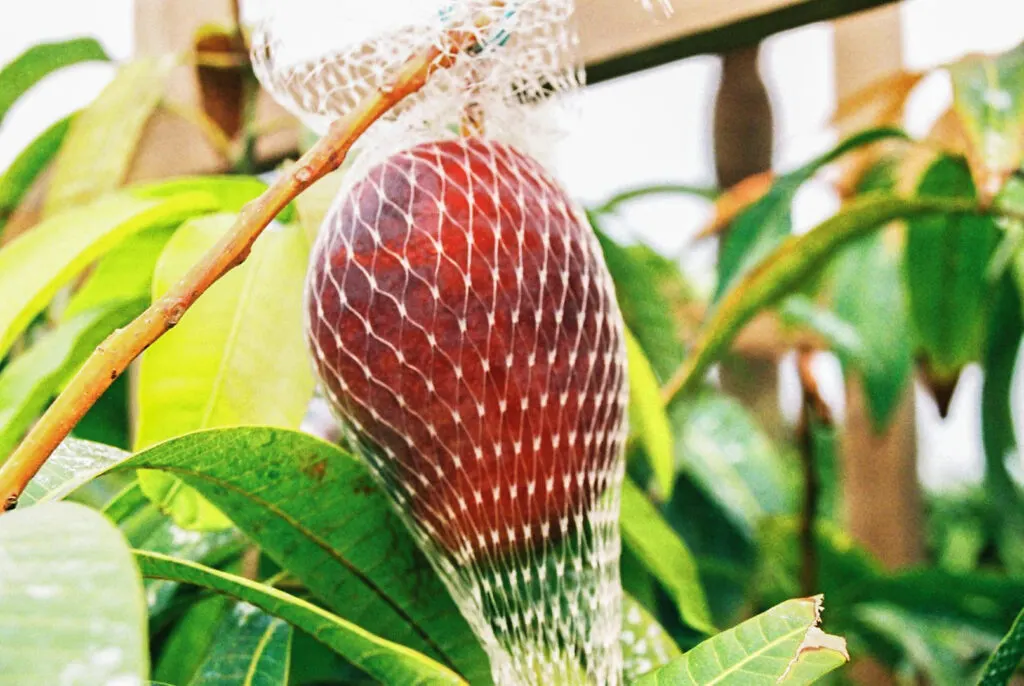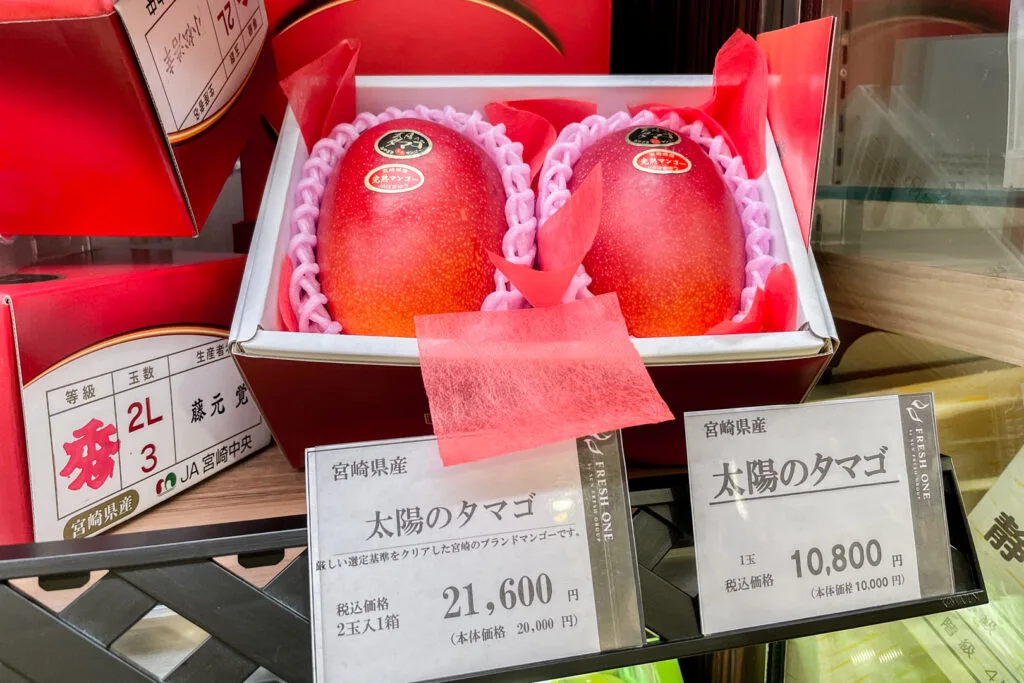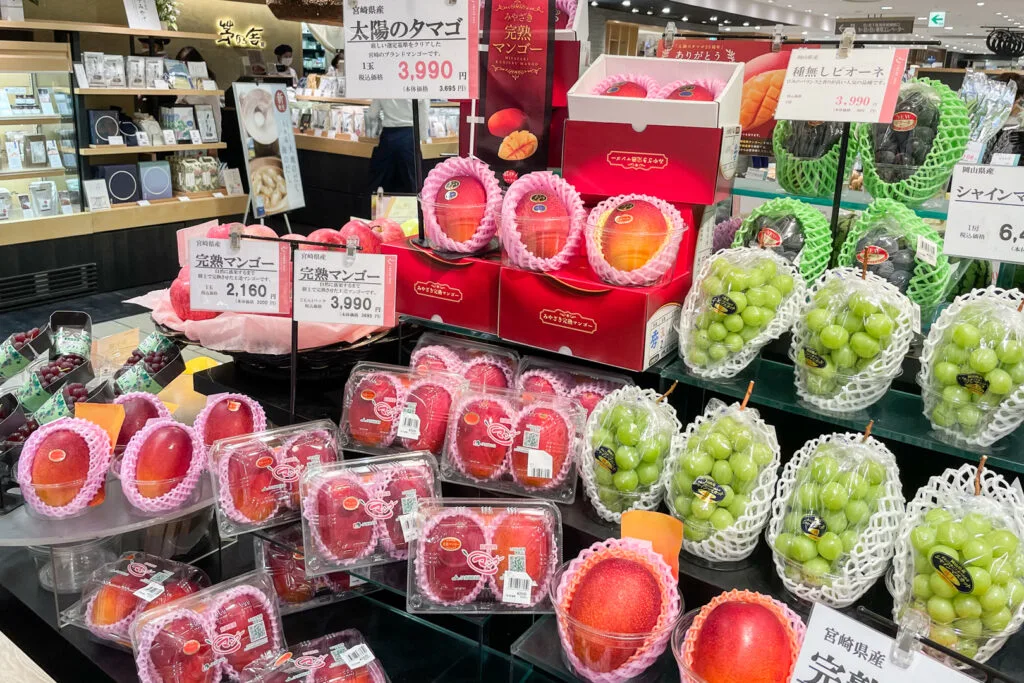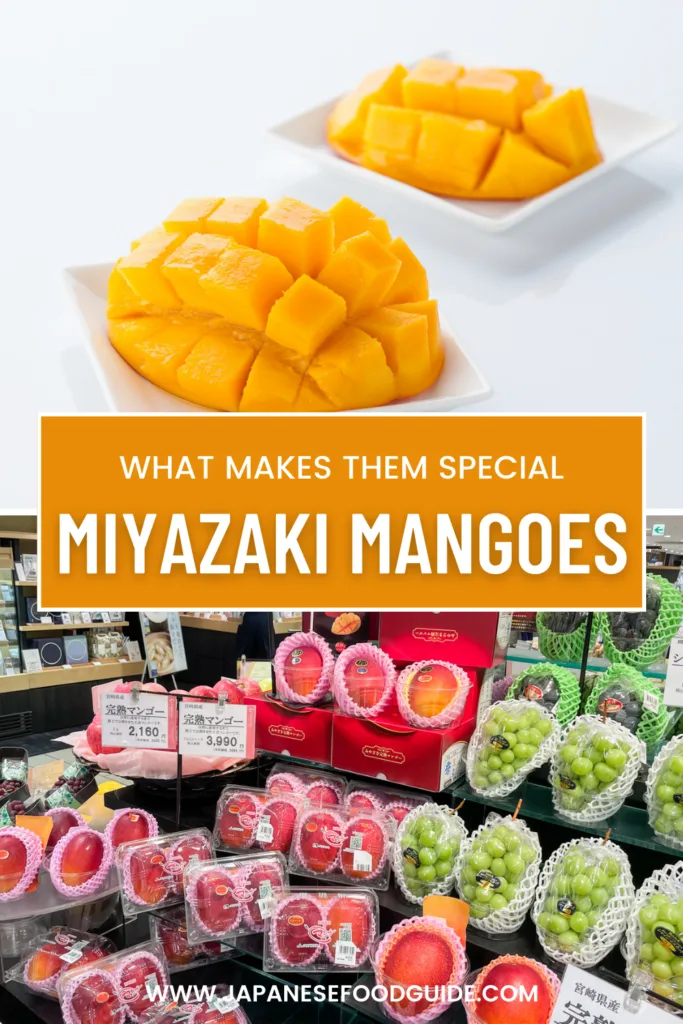When people think of famous food in Japan, fruit might not be the first to come to mind, and something tropical like mangoes may likely be far from the list. But if you go to grocery stores and department stores throughout Japan in the summer, you’re likely to find some nicely packaged mangoes that were grown in Miyazaki, a prefecture in the Kyūshū region of Japan.
Miyazaki Prefecture is filled with delicious food, and one of its most well-known is the mango. In fact, although Miyazaki is in second place when it comes to mango production in Japan, Okinawa coming in first, Miyazaki mangoes (宮崎マンゴー) are considered a luxury fruit and are so famous throughout the country that they are even featured on television programs.
These mangoes not only smell fragrant and look beautiful, their skin blushed with a red-orange gradient, but they are also plump and juicy with just the right amount of creamy sweetness that melts in your mouth. The taste is exquisite and truly unique — when I visited Miyazaki Prefecture, I couldn’t get enough!
To attain this appearance and taste, Miyazaki mangoes are grown with the utmost love and care, which is why some can fetch very high price tags and are typically given as gifts.

Table of Contents
History, Production, and Cultivation
Miyazaki mangoes started being commercially grown in Miyazaki Prefecture in the 1980s after Shōichi Tate introduced Irwin variety mango seeds from Okinawa to the area.
Although Miyazaki’s climate is an ideal environment for growing fruit, it took several years of trial and error by a small group of farmers to successfully grow their own unique mangoes. During this time, they also developed a method to prevent the mangoes from being damaged when they fell from the tree once ripe, which is still used to this very day.
The mangoes are hung from the ceiling of a temperature-regulated greenhouse and when near-ripe, each mango is encased in a special type of net that gently catches it and prevents it from becoming bruised when it naturally falls. This way, the mangoes maintain their aesthetically-pleasing appearance and, above all, have an especially delicious rich taste since they are harvested at their peak ripeness.

In order for Miyazaki mangoes to achieve their perfect red and orange hue, some farmers also use materials such as small mirrors to reflect sunlight onto the mangoes. They also adjust a mango’s position if it isn’t getting enough sun.
The size of a single Miyazaki mango can range from 200 grams to more than 650 grams. The larger ones are more likely to be considered the highest grade, called Taiyō no Tamago, if they successfully meet several requirements.
Taiyō no Tamago, the Most Luxurious Miyazaki Mango
The highest quality Miyazaki mangoes are Taiyō no Tamago (太陽のタマゴ), which means “Egg of the Sun”, the name reflecting how the abundant sunshine in Miyazaki grows beautifully colored mangoes that are perfectly shaped like an egg.
A Miyazaki mango needs to meet several conditions to be bestowed the revered Taiyō no Tamago designation by the Miyazaki Agricultural Economic Federation. It needs to weigh more than 350 grams, at least two-thirds of the mango’s skin must be red, and the sugar content, which is measured using a saccharimeter, must be 15 degrees or more. Each mango that passes is then carefully placed in a pink foam net, given a black and gold sticker with the name “Taiyō no Tamago” on it, and then boxed.


Considering that only about 10% of harvested Miyazaki mangoes meet these rigid requirements, it shouldn’t be a surprise that Taiyō no Tamago tend to be priced higher than the average Miyazaki mango. They are so desirable that they are sold at auctions and just this year two Taiyō no Tamago weighing a whopping four liters each were sold as a pair for a record-breaking 600,000 yen!
But there is no need to worry if you want to try a premium Taiyō no Tamago mango and don’t have hundreds of thousands of Japanese yen to spare. There are smaller and far more reasonably priced ones at high-end department stores or online shops selling at around 5000 yen for two. (In comparison, regular Miyazaki mangoes can be found for as low as 980 yen for one.)

Ways to Enjoy Miyazaki Mangoes
If you want to try Miyazaki mango, the best way is to have it in its original form and savor each juicy bite. If you decide to buy a whole Miyazaki mango, look for ones that are firm with smooth red skin, fragrant, and have no black spots. Make sure to refrigerate the mango if you don’t eat it right away and enjoy it as soon as possible.
Some of the many other ways Miyazaki mango can be enjoyed include in desserts such as parfaits, ice cream, and tarts, drinks like mango juice and smoothies, and even in savory dishes such as curries or as a sauce for fish. Below are some of the many places in Miyazaki Prefecture that specialize in serving fresh Miyazaki mango in the aforementioned styles:
- Tanaka Fruits
- Mango Star
- Cafe CANNA (conveniently located in Miyazaki Airport!)
- Fru Vege
- FRUITS GARDEN
- Fruit Ohno
There are also different kinds of souvenirs you can buy featuring Miyazaki mango, which are great to take home for your family and friends (or even for yourself!) after visiting the prefecture. Some include puddings, jams, lagers, cookies, and daifuku.
Note that you don’t have to go all the way to Miyazaki Prefecture to enjoy their mangoes. Miyazaki mangoes are sold online on Japanese websites, and hotel restaurants and cafes in Japan sometimes have special events during the summer like afternoon teas featuring all sorts of desserts made with this delicious mango. For instance, Kawasaki Nikko Hotel held a Miyazaki Mango and Crown Melon Afternoon Tea from June to July 2023.
Miyazaki Mango Day
Miyazaki mango is in season from March to August, but the best time to enjoy this fruit is in Miyazaki Prefecture on May 25th, which is called Miyazaki Mango Day.
Various mango-themed events are held throughout Miyazaki Prefecture and sometimes arrivals to Miyazaki Airport are lucky enough to be gifted a piece of Miyazaki mango. In 2023, Miyazaki City also gave a free mango to the first 40 people who registered their marriage or their child’s birth on that day!
As you can see, Miyazaki mango is undeniably the pride of Miyazaki and is also a treasured fruit in Japan, each one having been carefully tended to by farmers to achieve its utmost potential in terms of flavor and appearance. So if you visit Miyazaki Prefecture when these mangoes are in season, or spot one somewhere else in Japan, make sure to give it a try!
Pin me for later

Kay is a Canadian freelance translator and writer who has been in Japan for more than a decade. Having lived in the Chugoku, Kanto, and now the Kansai regions, she hopes to share their various local cuisine on JFG.
She also writes about her experiences being a mother in Japan on her website, Tiny Tot in Tokyo.
